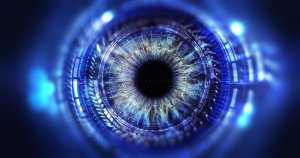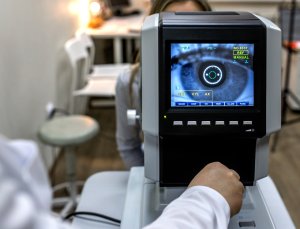Are there any optical aids for low vision?

Voted Best of Berks—
eight years in a row!

The most important low-vision aid is a proper pair of glasses with an adequate prescription. Low vision glasses with a stronger-than-usual bifocal are often the first reading aid prescribed. These stronger bifocals are most helpful for those with moderate impairment. Often the bifocals will supplement stronger aids such as a stand magnifier. However, the stronger bifocals require the reading material to be held closer. It can be difficult to adjust to holding the material closer than before. Start with the reading material at your nose and move away slowly until in focus. With stronger bifocals your field of view will be smaller. Keep your eyes still and move the reading material side to side instead of scanning with your eyes.
Hand magnifiers, often with a light, are available through Eye Consultants of Pennsylvania. Hand magnifiers are often used in on-the-go situations such as at restaurants or grocery stores. Hand magnifiers are also useful around the house. Unfortunately, hand magnifiers are often used improperly. The distance between the magnifier and the page should always be constant! To keep distance from magnifier to page constant, start with the magnifier on the page and pull away until the object is in focus. If you move the magnifier closer to your eye for a better look you must keep the distance between the magnifier and the object constant. Also, hand magnifiers should be used with your distance glasses.
Stand magnifiers are good for prolonged reading. The print does not have to be close to your face and there is a larger field of view. While using a stand magnifier you should wear bifocals or reading glasses and keep the distance between eyes and magnifier constant (Opposite of the case while using a hand magnifier).
Find a Doctor
Physician information including education, training, practice location and more.
Schedule an Appointment
Call 800-762-7132 or make an appointment online.





